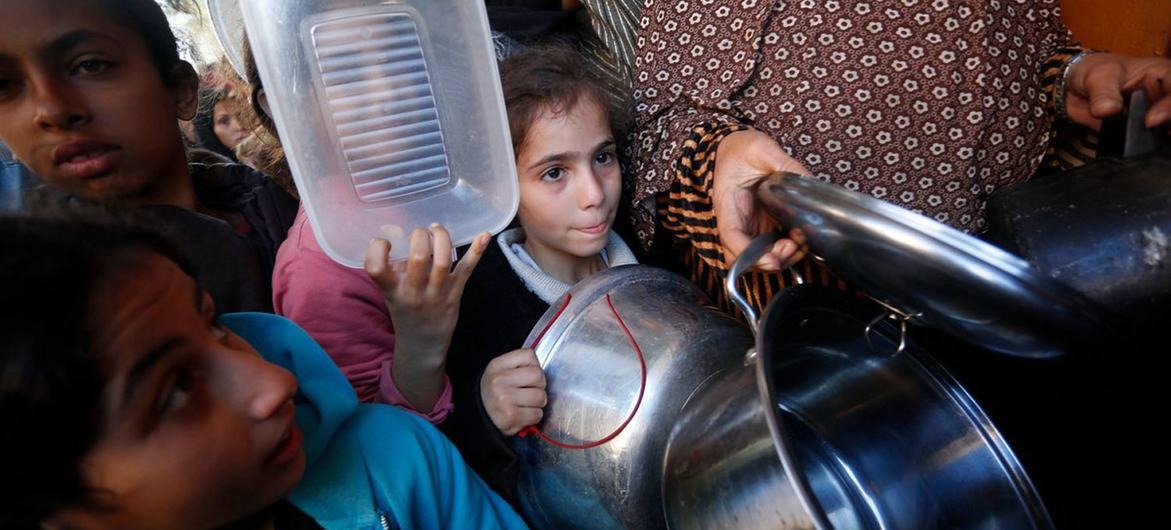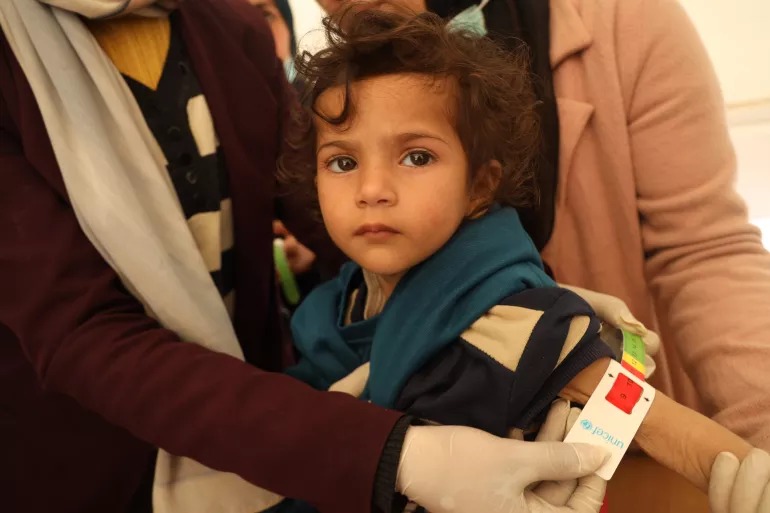
Listen to this note:
In a session of the Security Council this Tuesday, UN humanitarian agencies reported that the entire population of the Gaza Strip is suffering from hunger to varying degrees, where children and pregnant and lactating women face serious threats to their health.
The deputy director general of the Food and Agriculture Organization (FAO), Maurizio Martina, pointed out that some 2.2 million people are in a situation of food crisis or worse (phase 3 or higher of the hunger classification), ?the highest percentage of people suffering from this type of acute food insecurity? that this classification "has ever recorded."
Martina added that they estimate that around 50 percent of the population is in an emergency situation (phase 4) and, at least, one in four households is in catastrophic or famine-like conditions (phase 5).
The entire food chain, affected
The FAO deputy director noted that severe restrictions on fuel shipments are paralyzing the operation of water infrastructure and desalination plants, the production and delivery of basic food products and the supply of electricity.
According to reports, around 97 percent of Gaza's groundwater is unfit for human consumption.
Furthermore, bakeries' ability to produce bread has been severely hampered, he said.
Gaza's food production allowed for self-sufficiency in most fruits and vegetables, but the conflict has seriously disrupted this situation, he explained.
Martina added that, as of February 15, 2024, 46.2 percent of all cropland was damaged and they estimate that, by the end of last month, all fattening poultry had been culled or died due to lack of water and fodder. .
For his part, Ramesh Rajasingham, an official with the Office for the Coordination of Humanitarian Affairs (OCHA) said that one in six children under two years of age in northern Gaza suffers from acute malnutrition and wasting, which is low weight for height, It is the most visible and lethal type of malnutrition. Severe wasting, also known as severe acute malnutrition, is its deadliest form.
The agency's Coordination Director detailed how military operations, insecurity and extensive restrictions on the entry and delivery of essential goods have decimated food production and agriculture.
In this regard, food security experts warn of a complete agricultural collapse in northern Gaza by May if current conditions persist, with fields and productive assets destroyed or inaccessible, and people having had to abandon productive farmland due to to evacuation orders.
In addition, severe damage to water infrastructure due to fighting and the shutdown of electricity and fuel supplies in October has significantly affected access to water, essential for food production and the prevention of malnutrition and disease, Rajasingham noted.
The director highlighted the decline in fishing, since boats were prohibited from accessing the sea after October 7, as well as the death of livestock due to lack of forage and water and fighting. The commercial sector has also been paralyzed.
In addition to the lack of food availability, the official referred to the lack of water, sanitation and health services as aggravating factors, since malnourished people become more susceptible to diseases - which further deplete the body's nutritional reserves.
The delivery of humanitarian aid continues to be hindered by the closure of border crossings, severe restrictions on movement, denials of access and disruption of public order, among other factors.
According to the director, the suspension of funding to UNRWA is hampering its ability to mount an effective response.

Famine is imminent in northern Gaza
World Food Program (WFP) Deputy Executive Director Carl Skau said immediate action is needed to allow an increase in the volume of food and other humanitarian supplies arriving in northern Gaza, reiterating that the agency had decided to suspend its operations in that area of the enclave due to lack of security.
"If nothing changes, famine is imminent in northern Gaza," Skau said, adding that "we must all fulfill our responsibilities to ensure it does not happen on our watch."
Skau explained that in southern Gaza, WFP and its partners are on the ground, delivering food as it arrives to shelters, makeshift camps and tents. However, they cannot provide regular or sufficient food to people who need it.
"Most of the food is distributed in Rafah, the center of WFP's current operations in Gaza, and very little of it is distributed in the camps, and very little aid reaches people elsewhere," he added.
You may be interested in: Palo Alto says stop to Palestinian genocide: Community unites in solidarity


